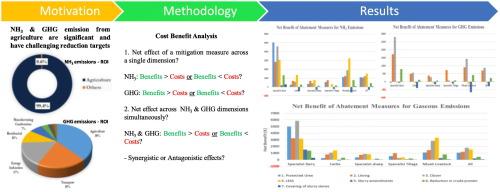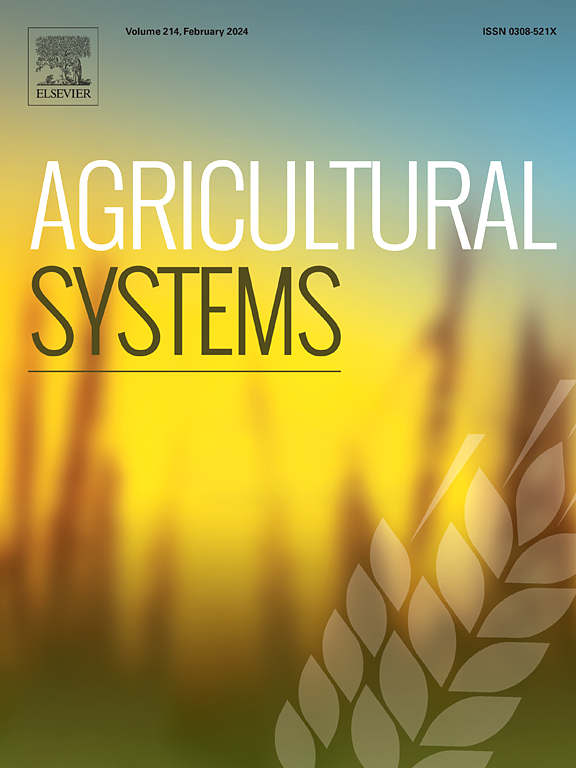农场一级气体排放减缓措施的综合评估
IF 6.1
1区 农林科学
Q1 AGRICULTURE, MULTIDISCIPLINARY
引用次数: 0
摘要
背景一些气体排放继续在地方、区域和全球范围内对人类健康和环境构成严重威胁。为了填补这一研究空白,本研究利用爱尔兰农场层面的数据,评估了一套有可能减少温室气体、氨气或两者排放的减排措施的整体成本和效益。结果和结论结果表明,减缓措施的相对效果因所考察的气体排放维度而异。意义分析如果未能考虑到这种协同和拮抗关系的影响,可能会导致错误的政策决策。本文章由计算机程序翻译,如有差异,请以英文原文为准。

Integrated assessment of farm-level mitigation measures for gaseous emissions
Context
Some gaseous emissions continue to pose a serious threat to human health and the environment locally, regionally and globally. This has resulted in several studies advocating for the implementation of mitigation measures to reduce the emissions of harmful gases.
Objective
While the vast majority of studies focus on a single type of gas, much less attention has been paid to the complementary or conflicting effects of mitigation measures across multiple harmful gaseous emissions dimensions.
Methods
To address this research gap, this study uses Irish farm-level data to assess the holistic costs and benefits of a suite of mitigation measures that have the potential to abate greenhouse gases, ammonia or both. A cost-benefit analysis framework is employed to assess the impact of the mitigation measures across five different farm system types.
Results and conclusions
Results indicate that the relative effectiveness of the mitigation measure varies depending on the gaseous emission dimension being examined.
Significance
Analyses that fail to account for such synergistic and antagonistic relationship impacts may lead to flawed policy decisions.
求助全文
通过发布文献求助,成功后即可免费获取论文全文。
去求助
来源期刊

Agricultural Systems
农林科学-农业综合
CiteScore
13.30
自引率
7.60%
发文量
174
审稿时长
30 days
期刊介绍:
Agricultural Systems is an international journal that deals with interactions - among the components of agricultural systems, among hierarchical levels of agricultural systems, between agricultural and other land use systems, and between agricultural systems and their natural, social and economic environments.
The scope includes the development and application of systems analysis methodologies in the following areas:
Systems approaches in the sustainable intensification of agriculture; pathways for sustainable intensification; crop-livestock integration; farm-level resource allocation; quantification of benefits and trade-offs at farm to landscape levels; integrative, participatory and dynamic modelling approaches for qualitative and quantitative assessments of agricultural systems and decision making;
The interactions between agricultural and non-agricultural landscapes; the multiple services of agricultural systems; food security and the environment;
Global change and adaptation science; transformational adaptations as driven by changes in climate, policy, values and attitudes influencing the design of farming systems;
Development and application of farming systems design tools and methods for impact, scenario and case study analysis; managing the complexities of dynamic agricultural systems; innovation systems and multi stakeholder arrangements that support or promote change and (or) inform policy decisions.
 求助内容:
求助内容: 应助结果提醒方式:
应助结果提醒方式:


